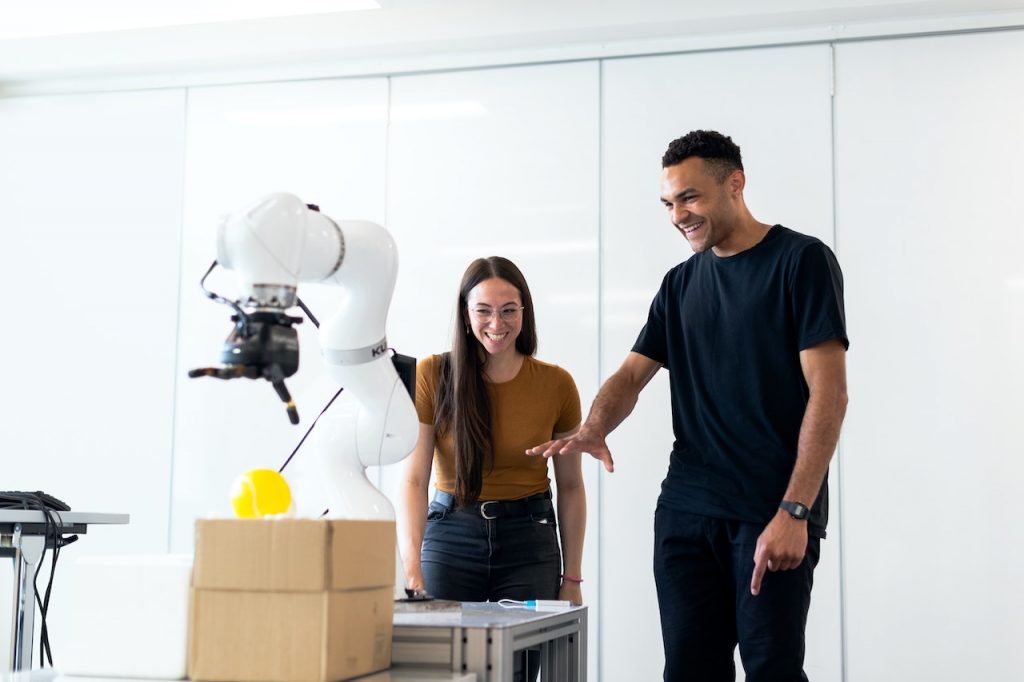
GUEST POST from Chateau G Pato
In today’s rapidly changing world, businesses are increasingly recognizing the importance of sustainable practices for their long-term growth and success. As the global population continues to grow, and resources become scarcer, it is imperative that companies embrace sustainable practices to reduce their environmental impact, enhance their social responsibility, and boost their economic performance. In this thought leadership article, we explore how Artificial Intelligence (AI) and Machine Learning (ML) are revolutionizing sustainable business practices. Through two engaging case studies and an insightful link to a relevant article, we will showcase how AI and ML can help businesses drive innovation, efficiency, and environmental stewardship.
Case Study 1: Optimizing Energy Consumption Through ML
One area where AI and ML are making significant strides is in optimizing energy usage. Companies worldwide are realizing the importance of minimizing their carbon footprint and reducing energy costs. In this case study, we examine how a manufacturing company implemented ML algorithms to optimize its energy consumption.
By collecting and analyzing real-time data from multiple sources such as sensors, weather forecasts, and machine performance, the ML algorithms were able to identify patterns and make accurate predictions. This allowed the company to adjust its energy consumption based on demand, minimizing wastage and reducing costs. Through this sustainable approach, the company achieved a significant reduction in energy consumption, lowering its environmental impact while improving its bottom line.
Case Study 2: AI-Driven Supply Chain Management for Sustainable Sourcing:
Sustainable sourcing is a critical aspect of driving sustainability across businesses. AI plays an instrumental role in streamlining supply chain processes, enabling companies to make informed decisions about their sourcing practices. Let us explore a case study where an apparel company utilized AI-driven solutions to promote sustainability in its supply chain.
The company implemented AI algorithms that analyzed various factors such as suppliers’ environmental track records, ethical labor practices, and material sources. By integrating this data into their supply chain management system, they were able to identify sustainable sourcing options that aligned with their values and minimized their overall environmental impact. This enabled the company to not only ensure the long-term availability of resources but also differentiate its brand by appealing to environmentally conscious customers.
Continuing our exploration into the realm of sustainable practices, it is insightful to understand the broader implications and future possibilities of AI and ML technologies. If you also read Human-Centered Design and Sustainable Innovation by Art Inteligencia, readers can gain a deeper understanding of how AI and ML are shaping the future of sustainable innovation. By leveraging AI-powered solutions, businesses can unlock new opportunities, from waste reduction and recycling optimizations to sustainable infrastructure planning. The article delves into various real-world examples, illuminating the potential impact of these technologies on driving sustainable practices across industries.
Case Study 3: Optimizing Energy Consumption with AI – Energy-efficient data centers by Google
One striking example of AI-driven sustainability can be seen in Google’s data centers. By leveraging AI algorithms, Google has managed to optimize energy consumption in their data centers, significantly reducing their environmental impact. Machine Learning models analyze vast amounts of data in real-time to identify ways to improve cooling systems, enhance energy distribution, and streamline workloads. This has led to substantial energy savings and a drastic reduction in carbon emissions.
Case Study 4: Smart Waste Management with ML – Waste sorting robots by ZenRobotics
The global waste crisis poses a tremendous challenge. To tackle this issue, AI-powered waste sorting systems have gained momentum. ZenRobotics, a Finnish company, has developed ML-based robots that can identify and sort recyclable materials from waste streams. These robots use advanced computer vision and ML algorithms to recognize different materials, ensuring maximum recycling efficiency. By automating waste sorting, the robots reduce human error, enhance recycling rates, and minimize landfill waste.
Furthermore, by employing AI and ML in waste management, companies can optimize collection routes, predict waste generation patterns, and enable smarter processing techniques, thus reducing the overall environmental impact of waste management activities.
Conclusion
The intersection of AI, ML, and sustainability presents an incredible opportunity for businesses to proactively address environmental challenges while driving economic growth. Through the case studies outlined above and the additional article provided, it is evident that AI and ML can enable companies to make informed decisions, optimize resource usage, promote sustainable sourcing, and enhance overall operational efficiency. By harnessing the power of these technologies, businesses can not only position themselves as responsible global citizens but also gain a competitive edge in an evolving marketplace. Embracing AI and ML for sustainable practices is no longer a choice but a strategic imperative for a better future.
SPECIAL BONUS: The very best change planners use a visual, collaborative approach to create their deliverables. A methodology and tools like those in Change Planning Toolkit™ can empower anyone to become great change planners themselves.
Image credit: Pixabay
 Sign up here to get Human-Centered Change & Innovation Weekly delivered to your inbox every week.
Sign up here to get Human-Centered Change & Innovation Weekly delivered to your inbox every week.
 Drum roll please…
Drum roll please…![]() Sign up here to get Human-Centered Change & Innovation Weekly delivered to your inbox every week.
Sign up here to get Human-Centered Change & Innovation Weekly delivered to your inbox every week.




